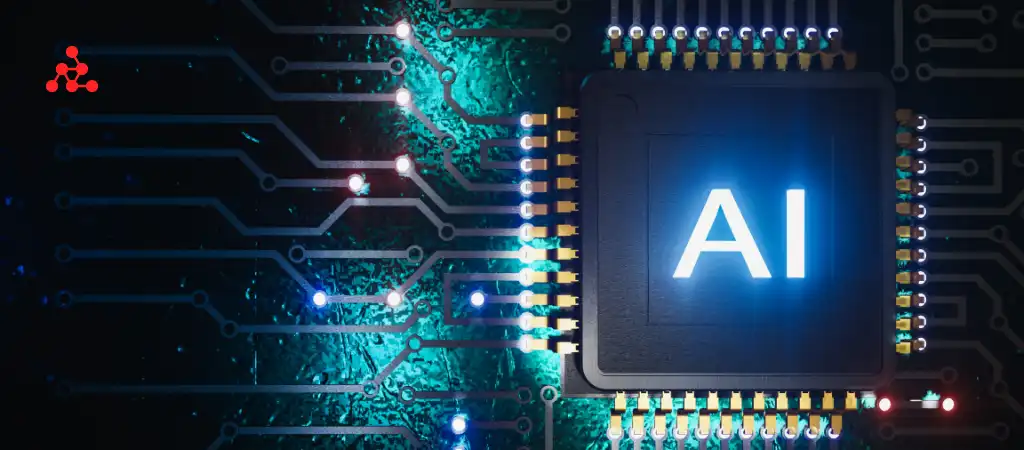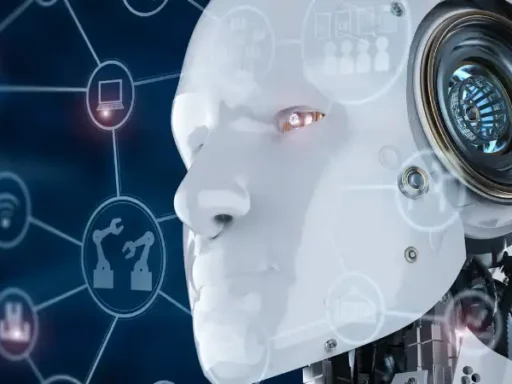Artificial Intelligence (AI) and Machine Learning (ML) are two of the most discussed topics in the technology landscape today. While they are often used interchangeably, they represent distinct concepts within the broader field of computer science.
Understanding the difference between AI and ML is crucial for anyone looking to dive deeper into the world of technology. This guide will explore the definitions, applications, and nuances that distinguish AI from ML, shedding light on their roles in shaping the future.
What is Artificial Intelligence?
Artificial Intelligence, or AI, refers to the simulation of human intelligence in machines. These machines are designed to think and act like humans, performing tasks that typically require human intelligence. The concept of AI is broad and encompasses various subfields, including machine learning, natural language processing, robotics, and more.
Key Characteristics of AI
-
Reasoning:
AI systems can reason and make decisions based on available data. This ability allows AI to perform complex tasks such as playing chess or diagnosing diseases.
-
Learning:
AI systems can learn from experience. This involves analyzing past data to improve future performance.
-
Problem-Solving:
AI can solve problems by breaking them down into smaller, more manageable tasks and systematically addressing them.
-
Perception:
AI can interpret sensory inputs such as visual or audio data to understand and interact with the environment.
-
Language Understanding:
AI systems can process and generate human language, enabling them to engage in conversations or translate languages.
What is Machine Learning?
Machine Learning (ML) is a subset of AI that focuses on the development of algorithms that enable machines to learn from data. Unlike traditional programming, where rules are explicitly coded, ML models identify patterns in data and make decisions based on those patterns. ML is the driving force behind many AI applications, such as recommendation systems, image recognition, and speech processing.
Key Characteristics of ML
-
Data-Driven:
ML relies heavily on large datasets to train models. The quality and quantity of data directly impact the performance of the ML model.
-
Pattern Recognition:
ML algorithms can recognize patterns and correlations in data, which can be used to make predictions or decisions.
-
Adaptability:
ML models can adapt to new data, improving their performance over time without human intervention.
-
Automation:
ML can automate complex processes, reducing the need for human input and increasing efficiency.
The Core Difference Between AI and ML
While AI and ML are closely related, they are not the same. The key difference between AI and ML lies in their scope and objectives. AI is a broader concept that encompasses the creation of intelligent systems capable of performing tasks that require human intelligence. ML, on the other hand, is a specific approach within AI that uses data-driven algorithms to enable machines to learn and improve over time.
AI as the Umbrella Term
AI is the overarching field that includes various subfields like ML, natural language processing (NLP), robotics, and expert systems. AI aims to create machines that can mimic human intelligence and behavior.
ML as a Subset of AI
ML is a specialized branch within AI that focuses on the development of algorithms that allow machines to learn from data. ML is just one way to achieve AI, and not all AI systems rely on ML.
Applications of AI and ML
Both AI and ML have a wide range of applications across various industries. Understanding the difference between AI and ML is essential to grasp how these technologies are applied in real-world scenarios.
Applications of AI
-
Healthcare:
AI is used to diagnose diseases, develop personalized treatment plans, and even assist in surgeries.
-
Finance:
AI powers robo-advisors, fraud detection systems, and algorithmic trading.
-
Manufacturing:
AI-driven robots are used in assembly lines, quality control, and supply chain optimization.
-
Entertainment:
AI generates content, powers recommendation engines, and creates virtual characters in video games.
Applications of ML
-
Image Recognition:
ML algorithms are used to recognize and classify images, enabling applications like facial recognition and medical imaging analysis.
-
Natural Language Processing (NLP):
ML is at the heart of NLP tasks such as sentiment analysis, machine translation, and chatbots.
-
Autonomous Vehicles:
ML algorithms help self-driving cars recognize objects, predict movements, and make decisions.
-
Recommendation Systems:
ML powers recommendation engines used by platforms like Netflix, Amazon, and YouTube to suggest content based on user preferences.
Types of AI
AI can be categorized into three main types: Narrow AI, General AI, and Superintelligent AI. These categories help differentiate the levels of intelligence and capability that AI systems can achieve.
Narrow AI (Weak AI)
Narrow AI is designed to perform specific tasks and is the most common form of AI in use today. Examples include virtual assistants like Siri and Alexa, as well as recommendation systems.
General AI (Strong AI)
General AI refers to systems that possess the ability to perform any intellectual task that a human can do. General AI is still largely theoretical and does not yet exist in practice.
Super intelligent AI
Super intelligent AI goes beyond human intelligence and capabilities. It is a hypothetical form of AI that could outperform humans in every aspect, from creativity to problem-solving. The concept of super intelligent AI raises ethical and safety concerns, as its development could have significant implications for humanity.
Types of ML
ML can be categorized into three main types: Supervised Learning, Unsupervised Learning, and Reinforcement Learning. Each type of ML serves different purposes and is used in various applications.
Supervised Learning
In supervised learning, the ML model is trained on a labeled dataset, where the input data is paired with the correct output. The model learns to map inputs to outputs, and it can make predictions based on new, unseen data. Common applications include image classification and spam detection.
Unsupervised Learning
Unsupervised learning involves training the ML model on an unlabeled dataset. The model identifies patterns and relationships within the data without prior knowledge of the correct output. Clustering and anomaly detection are common applications of unsupervised learning.
Reinforcement Learning
Reinforcement learning is a type of ML where the model learns by interacting with an environment and receiving feedback in the form of rewards or penalties. The model aims to maximize cumulative rewards over time. This approach is widely used in robotics, gaming, and autonomous systems.
Ethical Considerations in AI and ML
As AI and ML continue to evolve, ethical considerations become increasingly important. Understanding the difference between AI and ML also involves recognizing the potential risks and challenges associated with their development and deployment.
Bias in AI and ML
One of the major ethical concerns in AI and ML is bias. Since ML models are trained on data, any bias present in the data can be reflected in the model’s predictions. This can lead to unfair or discriminatory outcomes in areas such as hiring, lending, and law enforcement.
Privacy Concerns
AI and ML systems often rely on large datasets that may contain sensitive personal information. Ensuring the privacy and security of this data is crucial to prevent misuse and protect individual rights.
Accountability and Transparency
As AI and ML systems become more autonomous, questions arise about accountability and transparency. Who is responsible when an AI system makes a mistake? How can we ensure that AI systems operate in a transparent and understandable manner?
The Future of Work
The rise of AI and ML has led to concerns about the future of work. Automation powered by AI and ML could displace jobs, particularly in industries that rely on routine tasks. However, it could also create new opportunities and industries that do not exist today.
You Might Be Interested In
- What Are The Four 4 Types Of Robotics?
- Is Machine Learning The Future?
- What Is A Tensor In Machine Learning?
- Is CNN Supervised Or Unsupervised?
- What Is a Loss Function In Machine Learning?
Conclusion
Understanding the difference between AI and ML is crucial for anyone looking to navigate the ever-evolving landscape of technology. AI is a broad field that aims to create machines capable of intelligent behavior, while ML is a specific subset of AI focused on learning from data.
Both AI and ML have transformative potential across various industries, from healthcare to finance to entertainment. However, with this potential comes ethical considerations that must be addressed to ensure the responsible development and deployment of these technologies.
As AI and ML continue to advance, their distinction will remain important in guiding research, development, and application. While AI represents the broader goal of simulating human intelligence, ML is one of the most powerful tools we have to achieve that goal. By understanding their differences and working together to address the challenges they present, we can harness the full potential of AI and ML to create a better future.
FAQs
What is Artificial Intelligence?
Artificial Intelligence (AI) is the science of creating machines that can perform tasks requiring human intelligence. This includes activities such as reasoning, learning, problem-solving, and understanding language. AI systems are designed to mimic the cognitive functions of the human mind, enabling them to perform complex tasks autonomously.
These tasks can range from simple actions like recognizing faces in photos to more sophisticated operations like driving a car or making medical diagnoses. The concept of AI is broad and encompasses various subfields, including machine learning, natural language processing, robotics, and expert systems, each focusing on different aspects of creating intelligent behavior in machines.
What is Machine Learning?
Machine Learning (ML) is a specialized branch within the broader field of AI. It involves developing algorithms that allow machines to learn from data and improve their performance over time without being explicitly programmed. ML models are trained on large datasets, where they identify patterns and correlations that they can use to make predictions or decisions when presented with new data.
This capability is particularly useful in applications such as image recognition, natural language processing, and autonomous vehicles, where traditional programming methods would be impractical or impossible. By relying on data-driven insights, ML enables machines to adapt to new information and situations, continually enhancing their accuracy and efficiency.
What is the core difference between AI and ML?
The core difference between AI and ML lies in their scope and objectives. AI is an overarching field focused on creating intelligent systems capable of performing tasks that require human-like cognition. It is a broad concept that includes various subfields and approaches, one of which is machine learning.
ML, on the other hand, is a specific method within AI that uses data-driven algorithms to enable machines to learn from experience. While AI aims to develop systems that can perform any task that requires intelligence, ML is primarily concerned with creating models that can improve their performance based on data. Thus, ML is a subset of AI, and not all AI systems rely on machine learning.
What are the applications of AI and ML?
AI and ML have a wide range of applications across various industries, with each offering unique capabilities that drive innovation. AI is used in healthcare to diagnose diseases, develop personalized treatments, and even assist in surgeries. In finance, AI powers robo-advisors, fraud detection systems, and algorithmic trading, while in manufacturing, AI-driven robots enhance efficiency on assembly lines and in quality control.
Entertainment industries leverage AI to generate content and create virtual characters. On the other hand, ML is the backbone of many applications like image recognition, where it classifies and identifies objects within images, and natural language processing, which includes tasks such as sentiment analysis, chatbots, and machine translation.
Additionally, ML is crucial in the development of autonomous vehicles, where it helps self-driving cars recognize objects and make real-time decisions, and in recommendation systems used by platforms like Netflix and Amazon to suggest personalized content to users.
What are the types of AI?
AI can be categorized into three main types: Narrow AI, General AI, and Super intelligent AI, each representing different levels of capability and intelligence. Narrow AI, also known as Weak AI, is designed to perform specific tasks, such as virtual assistants like Siri and Alexa or recommendation systems. It is the most common form of AI in use today and does not possess the ability to generalize beyond its specific function.
General AI, or Strong AI, refers to systems that have the capability to perform any intellectual task that a human can do. This type of AI is still theoretical and remains a goal for future research. Superintelligent AI, which surpasses human intelligence and abilities in all respects, is a hypothetical concept that raises significant ethical and safety concerns due to its potential impact on society.







